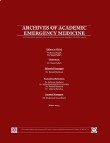Analysis of Maternal Coronavirus Infections and NeonatesBorn to Mothers with 2019-nCoV; a Systematic Review
The emergence and fast spread of 2019 novel coronavirus (2019-nCoV ) threatens the world asa new public health crisis. This study aimed to clarify the impact of novel coronavirus disease (COVID-19) onpregnant patients and maternal and neonatal outcomes.
A comprehensive literature search was con-ducted in databases including PubMed, Scopus, Embase, ProQuest, and Science Direct. All studies includingoriginal data; case reports, case series, descriptive and observational studies, and randomized controlled trialswere searched from December 2019 until 19 March 2020.
The search identified 1472 results and 939abstracts were screened. 928 articles were excluded because studies did not include pregnant women. Full textsof eleven relevant studies were reviewed and finally nine studies were included in this study. The characteris-tics of 89 pregnant women and their neonates were studied. Results revealed that low-grade fever and coughwere the principal symptoms in all patients. The main reported laboratory findings were lymphopenia, elevatedC-Reactive Protein (CRP), Amino alanine transferase (ALT), and Aspartate amino transferase (AST). In all symp-tomatic cases, chest Computerized Tomography (CT) scans were abnormal. Fetal distress, premature ruptureof membranes and preterm labor were the main prenatal complications. Two women needed intensive careunit admission and mechanical ventilation, one of whom developed multi-organ dysfunction and was on Extra-corporeal Membrane Oxygenation (ECMO). No case of maternal death was reported up to the time the studieswere published. 79 mothers delivered their babies by cesarean section and five women had a vaginal delivery.No fetal infection through intrauterine vertical transmission was reported.
Available data showedthat pregnant patients in late pregnancy had clinical manifestations similar to non-pregnant adults. It appearsthat the risk of fetal distress, preterm delivery and prelabor rupture of membranes (PROM) rises with the onsetof COVID-19 in the third trimester of pregnancy. There is also no evidence of intrauterine and transplacentaltransmission of COVID-19 to the fetus in the third trimester of pregnancies.
- حق عضویت دریافتی صرف حمایت از نشریات عضو و نگهداری، تکمیل و توسعه مگیران میشود.
- پرداخت حق اشتراک و دانلود مقالات اجازه بازنشر آن در سایر رسانههای چاپی و دیجیتال را به کاربر نمیدهد.


